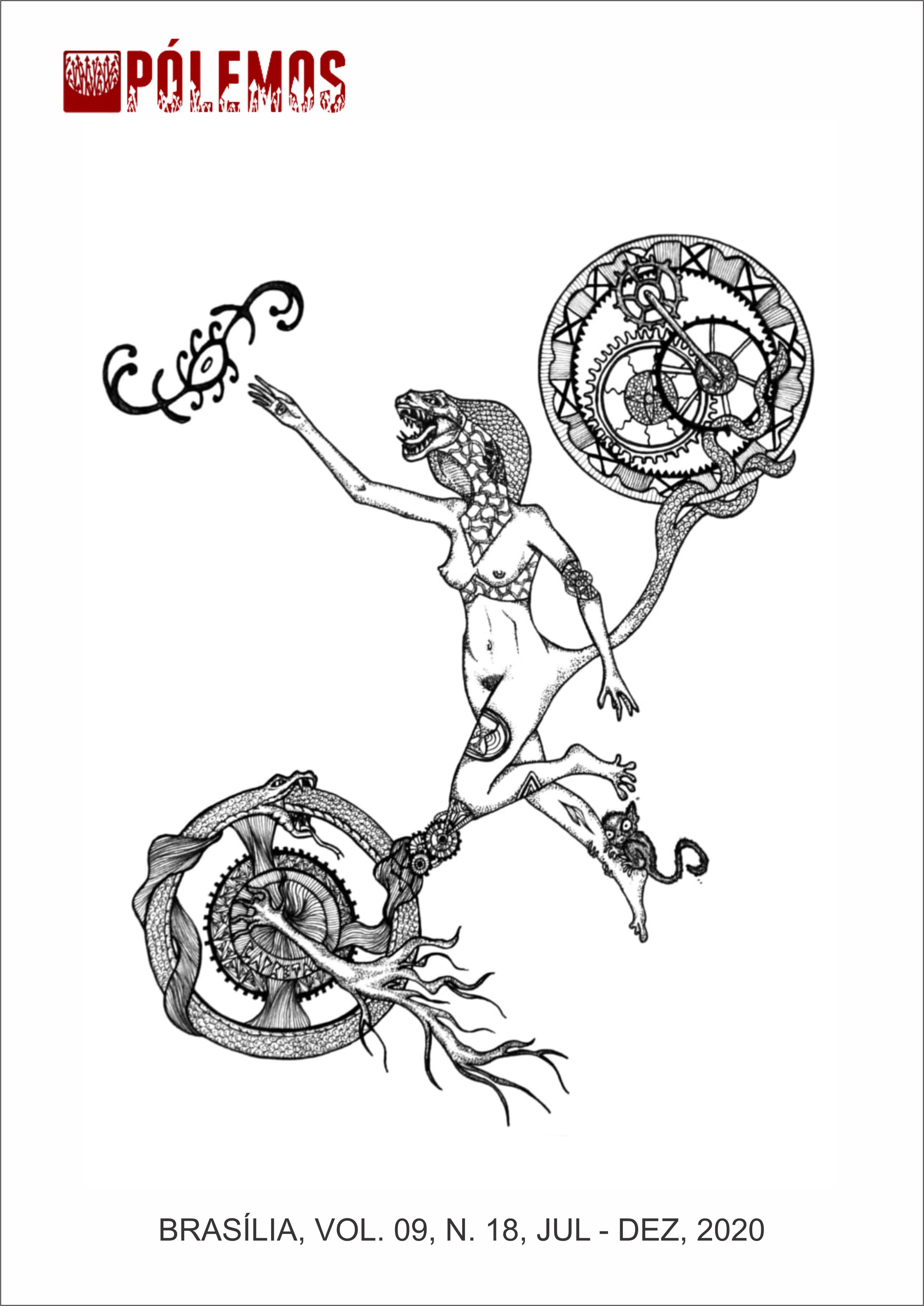Ä€TMAN AND BRAHMAN: FUNDAMENTALS OF REALITY
DOI:
https://doi.org/10.26512/pl.v9i18.29871Keywords:
Ä€tman. Brahman. Ontology. Reality. Consciousness.Abstract
This work aims to explain how the articulation and, henceforth, identification between two conceptual realities ”“ brahman and ãtman ”“, constitute the basis of the philosophical idealism of the Brahmanic tradition, insofar as it establishes a unique foundation to any and all phenomenal multiplicity that presents to the sensory testimony. The material epicenter of the investigation is precisely in the Upaniá¹£adic Treaties, where the development of the ãtman theory receives a philosophical injection which results in the establishment of a privileged communication between the essential part (ãtman) of the human being and his absolute foundation (brahman). In short, it is intended to investigate the extent to which Upaniá¹£adic thinkers have dealt with the spiritual heritage of their predecessors.
Downloads
References
BILIMORIA, Purushottama (org). History of Indian Philosophy. Editora: Routledge. 2017.
COHEN, Signe (ed.). The Upaniá¹£ads: A Complete Guide. Editora: Routledge. London. 2018.
COOMARASWAMY. Ananda K. Hinduism and Buddhism. Editora: Manohar. New Delhi. 1999.
DASGUPTA, Surendranath. History of Indian Philosophy (Vol. 1). Editora: Motial Banarsidass. New Dehli.
DE SMET, Richard. Guidelines in Indian Philosophy. Edited by Ivo Coelho. First Draft. 2018.
____________________. Understanding Sankara. Editora: Motial Banarsidass. Delhi. 2013.
DEUSSEN, Paul. The Philosophy of the Upanishads. Translation in English: A.S. Geden. Editora: Cosimo Classics. New York. 2009.
FONSECA, Carlos Alberto (trad). Bhagavadgita (Canção do Venerável). Editora: Globo. São Paulo. 2009.
GONDA, Jan. A History of Indian Literature. Vol I, Fasc. 1. Editora: Otto Harrassowtiz. Wiesbaden. 1975.
______________. Notes on Brahman. Editora: University of Delhi. New Delhi. 1950.
GUPTA, Bina. Cit: Consciousness. Editora: Oxford University Press. New York. 2003.
______________. The Disinterested Witness: A Fragment of Advaita Vedanta Phenomenology. Editora: Northwestern University Press. Illinois. 1998.
MARTINS, Roberto de Andrade. O indizível no pensamento indiano: a sabedoria que ultrapassa os conceitos. 2013. Disponível em: <http://tinyurl.com/mandukya> Acesso em: 04 de junho de 2019.
MOHANTY, Jitendra Nath. Reason and Tradition in Indian Thought. Editora: Clarendon Press. 1993.
OINAM, Baghat. ‘Philosophy in India’ or ‘Indian Philosophy’: Some Post-Colonial Questions. 2018. Disponível em :<https://link.springer.com/content/pdf/10.1007%2Fs11841-018-0679-0.pdf> Acesso em: 23 de outubro de 2019.
OLIVELLE, Patrick (trad). Samnyasa Upanisads. Editora: Oxford University Press. New York. 1992.
___________________________. Upanisads: A new translation by Patrick Olivelle ”“ Reissued 2008. Editora: Oxford University Press. New York. 2008.
RADHAKRISHNAN, Sarvepalli. Indian Philosphy (Vol.1). Editora: George Allen & Unwin LTD. Londres. 1923.
_________________________________. The Principal Upanisads. Editora: George Allen & Unwin LTD. Londres. 1968.
RAM-PRASAD, Chakravarthi. Indian Philosophy and the Consequences of Knowledge. Editora: Ashgate. Hampshire. 2007.
RAMBACHAN, Anantanand. Accompishing the Accomplished: The Vedas as a Source of Valid Knowledge in Sankara. Editora: University of Hawaii Press. Hawaii. 1991.
TIMALSINA, Sthaneshwar. Consciousness in Indian Philosophy: The Advaita doctrine of ‘awareness only’. Editora: Routledge. Oxon. 2009.
WOOD, Thomas E. The Mandukya Upanisad and the Agama Sastra: An Investigation into the Meaning of Vedanta. Editora: Motial Banarsidass. Delhi. 1992.
ZIMMER, Heinrich. Filosofias da Índia. 6ª ed. Tradução: Nilton Almeida Silva e Cláudia Giovani Bozza. Editora: Palas Athena. São Paulo. 2015.
Downloads
Published
How to Cite
Issue
Section
License
Copyright (c) 2020 PÓLEMOS ”“ Revista de Estudantes de Filosofia da Universidade de Brasília

This work is licensed under a Creative Commons Attribution-NonCommercial-NoDerivatives 4.0 International License.
Todos os trabalhos que forem aceitos para publicação, após o devido processo avaliativo, serão publicados sob uma licença Creative Commons, na modalidade Attribution-NonCommercial-NoDerivatives 4.0 International Public License (CC BY-NC-ND 4.0). Esta licença permite que qualquer pessoa copie e distribua a obra total e derivadas criadas a partir dela, desde que seja dado crédito (atribuição) ao autor / Ã autora / aos autores / às autoras.


